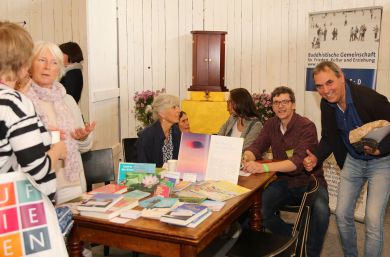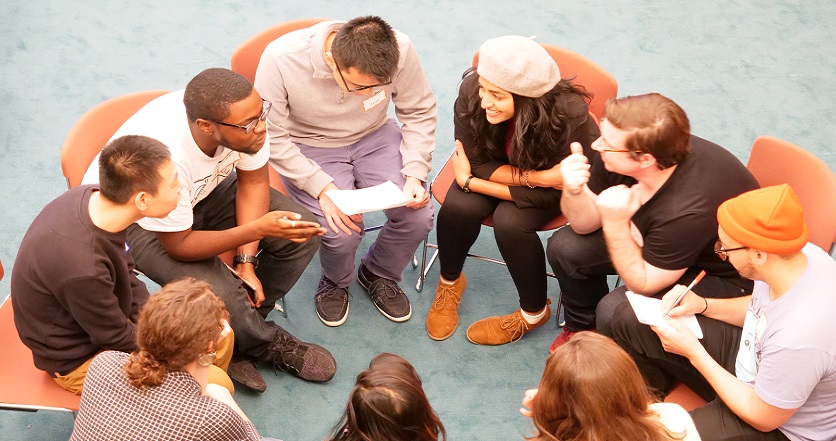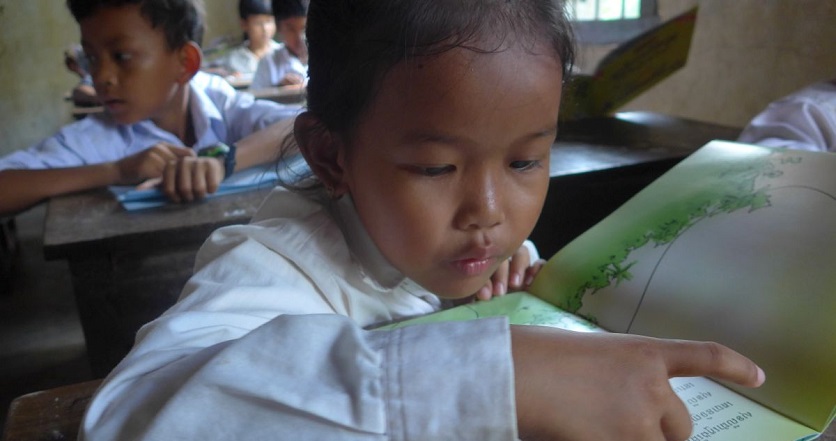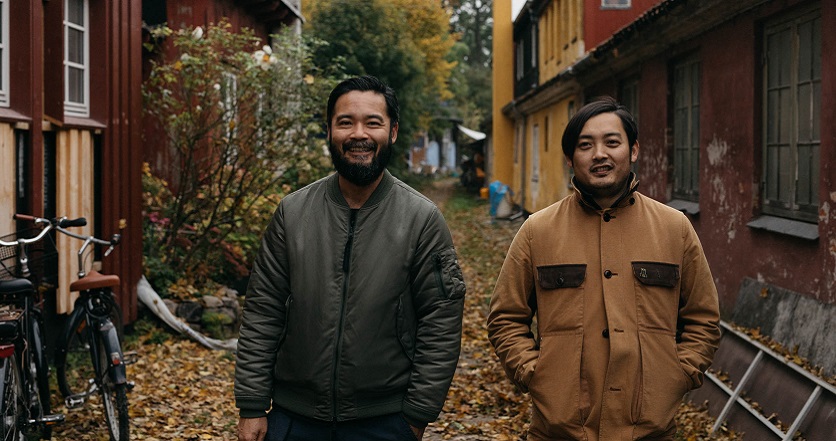Confronting Life and Death
“The life of a human being is fleeting,” writes Nichiren, “The exhaled breath never waits for the inhaled one. Even dew before the wind is hardly a sufficient metaphor.” Although we are inclined to ignore the fact, sooner or later each of us must confront the inevitable reality of death. Indeed, Buddhism originated from this realization. The “Leben und Tod” (Life and Death) fair in Bremen, Germany, is an annual event that allows members of the public to do just that, exposing people to various perspectives on death and focusing on palliative care and psychological support for those who are dying or grieving. For the past four years, SGI-Germany (SGI-D) has hosted a booth where visitors can ask questions and learn about the Buddhist view. Wolf Soujon describes SGI-D’s participation.
Please tell us about the fair on life and death, the kind of people it attracts and why you think it is growing in popularity each year.
The fair targets a wide range of visitors, such as professionals in palliative care, hospice workers, undertakers and those in related occupations. Included in this group are volunteers (or potential volunteers) from support groups for those grieving death or groups for suicide prevention. It also includes the general public.

The fair is a two-day annual event at the Bremen Exhibition Center. In May 2019, it attracted over 5,000 visitors. It is the only event of its kind and magnitude in Germany.
I think its growing popularity reflects the growing relevance of the issue in society. An increasing number of elderly people and their wish to end life in dignity generates an increasing number of professionals working in the field. In addition to exhibition booths, some of which offer commercial services, the event includes lectures and workshops on the psychological and ethical concerns pertaining to the topic of life and death. Various religious groups invite visitors to speak on the topic.
Despite the serious nature of the event, there is a light and welcoming atmosphere.
How do you explain the Buddhist view of life and death to visitors to your booth?
Most visitors to our booth are either “professional bodhisattvas,” like nurses, therapists and volunteers, or people who have suffered or are confronting personal loss or even their own death. Conversations are often very deep and personal from the start. Visitors also have the opportunity to try chanting Nam-myoho-renge-kyo in a separate “workshop” space if they would like to.
We also usually have groups of fourth graders that visit our booth with a teacher. Long-term members of SGI-D, who are elementary school teachers, answer the questions that the kids prepared in school prior to the fair. Considering their age and the hustle and bustle of the fair, the children are amazingly focused, and many of their questions are really profound.
The most frequent questions, as I can recall, are if we, as Nichiren Buddhists, have special burial rituals and “Where do Buddhists go when they are dead?”, “Is Buddha your god?” and “Are all Buddhists vegetarians?”

A simple way to explain our view on life and death is to say that Buddhism compares living and dying to waking and sleeping. We die when we are old or very sick or maybe because of an accident. Although the physical body decays when we die, we believe the essential part of us re-merges with the universe. When the time is right, we come back refreshed. It’s a bit more complicated, but that is the basic idea.
There is also an analogy that describes our life at birth as being like a wave that rises on the ocean. When we die, it is like the wave sinking back into the ocean. But the water itself doesn’t disappear, and with new energy, the wave emerges from the depths of the sea again.
Around the time of the fair, we also have public lectures on the Buddhist view of life and death.
In your experience, which insights help people most, and why do you think this might be?
The idea that we can always make a fresh start, no matter what destiny we have had to face until now; irrespective of their religious or nonreligious beliefs, people feel encouraged when they hear that.
Hearing personal experiences of repeatedly overcoming suffering and always becoming happier touches people, much more so than elaborate explanations of Buddhist concepts. Many visitors who were dealing with personal loss seemed encouraged by our conviction that we are connected to our deceased loved ones through past, present and future and can always send positive energy to them through our prayer, chanting Nam-myoho-renge-kyo.
How has taking part in this activity changed the way you think about or have approached loss or grief in your own life?
On May 25, 2018, my son Aaron committed suicide after a relatively brief but serious episode of depression. He died at the age of 23. My wife (Aaron’s stepmother) and I decided to organize our activity at the fair as we had done the years before. It was a real struggle for me because after Aaron’s death I had started to show symptoms of depression myself. But I was absolutely determined to fight the illness and not let that darkness in me win. I wanted to encourage people. This was my fourth year at the fair, but it was a very different experience talking to people about death, loss, grief and hope. I had firsthand experience and could feel what they felt.
At the fair, I was emotionally treading on thin ice, but I pulled through and that was really crucial for me. I knew that grief and depression would not rule me. I am still in treatment but recovering.
To learn more about Nichiren Buddhism’s view on life and death, read “Life and Death.”







